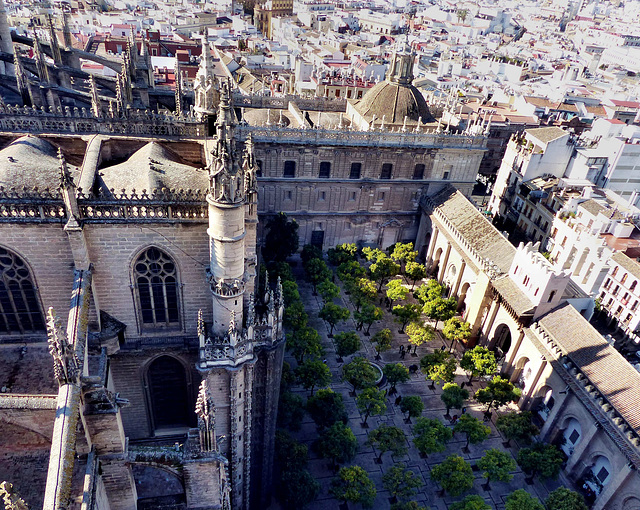Sevilla - Correos
Ronda
Ronda - Parador
Ronda - Parador
Ronda - Tajo de Ronda
Ronda
Ronda
Ronda - Plaza de Toros
Ronda - Puente Nuevo
Ronda - Puente Nuevo
Ronda - Santa Maria la Mayor
Ronda - Casa del Rey Moro
Ronda - Casa del Rey Moro
Ronda - Casa del Rey Moro
Ronda - Casa del Rey Moro
Ronda - Casa del Rey Moro
Ronda - San Sebastian
Ronda - Puente Viejo
Ronda - Nuestro Padre Jesús
Ronda - Puente San Miguel
Ronda - Palacio de Salvatierra
Ronda - Palacio de Salvatierra
Ronda - Palacio de Salvatierra
Sevilla - Catedral de Santa María de la Sede
Sevilla
Sevilla
Sevilla - Catedral de Santa María de la Sede
Sevilla - Catedral de Santa María de la Sede
Sevilla - Catedral de Santa María de la Sede
Sevilla - Catedral de Santa María de la Sede
Sevilla - Catedral de Santa María de la Sede
Sevilla - Catedral de Santa María de la Sede
Sevilla - Catedral de Santa María de la Sede
Sevilla - Catedral de Santa María de la Sede
Sevilla - Catedral de Santa María de la Sede
Sevilla - Catedral de Santa María de la Sede
Sevilla - Catedral de Santa María de la Sede
Sevilla - Catedral de Santa María de la Sede
Sevilla - Catedral de Santa María de la Sede
Sevilla - Catedral de Santa María de la Sede
Sevilla - Catedral de Santa María de la Sede
Sevilla - Catedral de Santa María de la Sede
Sevilla - La Giralda
Sevilla - La Giralda
Sevilla - Street Market
Location
See also...
Keywords
Authorizations, license
-
Visible by: Everyone -
All rights reserved
-
169 visits
Sevilla - Catedral de Santa María de la Sede


Seville was a Roman "colonia" since 45BC. The important city got looted by the Vandals in 428 and developed into a Bishopric seat under Visigothic rule. After the Moors had defeated the Visigoths in the Battle of Guadalete, the conquered Seville and made it the capital of a province. Normans devastated Seville in 844 but Seville got rebuilt and flourished under the different Moorish dynasties.
In 1248 Seville was conquered by the troops of Ferdinand III of Castile. The emigration of hundredthousands of Moors to Northern Africa led to a decrease of economics in the whole area. Seville recovered in the 16th and 17th century, when it became the hub of Spanish maritime trade. During this period, the port of Seville had a monopoly on overseas trade. Vespucci and Magellan planned and started their voyages here.
The Cathedral "Catedral de Santa María de la Sede" was erected between 1401 and 1519 on the remains of the Great Mosque of Seville, built in the 12th century.
With about 11,520m² this is the third-largest church in the world as well as the largest Gothic church. The Cathedral in Cologne covers about 7,900m².
The Great Mosque of Seville was dedicated in 1172 and completed 1198. It was a rectangular building 113m x 135m inculding a minaret ("La Giralda") and a courtyard. After the conquest the mosque was converted into the city's cathedral. The orientation was changed and it got divided into chapels by new walls. In 1401 it was decided to build a new cathedral and replace the mosque, that had served as a cathedral. In 1551, 5 years after construction ended, the crossing lantern ("cimborrio"), collapsed and was rebuilt.
The builders preserved some elements from the ancient mosque like the sahn, now named "Patio de los Naranjos" (place of the orange trees), here seen from "La Giralda", that once was a minarett. The fountain in the center of the sahn is even older, it is dated back to the time of the Visigoths.
In 1248 Seville was conquered by the troops of Ferdinand III of Castile. The emigration of hundredthousands of Moors to Northern Africa led to a decrease of economics in the whole area. Seville recovered in the 16th and 17th century, when it became the hub of Spanish maritime trade. During this period, the port of Seville had a monopoly on overseas trade. Vespucci and Magellan planned and started their voyages here.
The Cathedral "Catedral de Santa María de la Sede" was erected between 1401 and 1519 on the remains of the Great Mosque of Seville, built in the 12th century.
With about 11,520m² this is the third-largest church in the world as well as the largest Gothic church. The Cathedral in Cologne covers about 7,900m².
The Great Mosque of Seville was dedicated in 1172 and completed 1198. It was a rectangular building 113m x 135m inculding a minaret ("La Giralda") and a courtyard. After the conquest the mosque was converted into the city's cathedral. The orientation was changed and it got divided into chapels by new walls. In 1401 it was decided to build a new cathedral and replace the mosque, that had served as a cathedral. In 1551, 5 years after construction ended, the crossing lantern ("cimborrio"), collapsed and was rebuilt.
The builders preserved some elements from the ancient mosque like the sahn, now named "Patio de los Naranjos" (place of the orange trees), here seen from "La Giralda", that once was a minarett. The fountain in the center of the sahn is even older, it is dated back to the time of the Visigoths.
Marco F. Delminho, Alexander Prolygin have particularly liked this photo
- Keyboard shortcuts:
Jump to top
RSS feed- Latest comments - Subscribe to the comment feeds of this photo
- ipernity © 2007-2024
- Help & Contact
|
Club news
|
About ipernity
|
History |
ipernity Club & Prices |
Guide of good conduct
Donate | Group guidelines | Privacy policy | Terms of use | Statutes | In memoria -
Facebook
Twitter

Sign-in to write a comment.